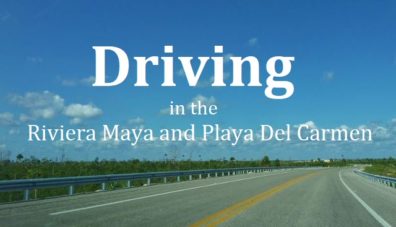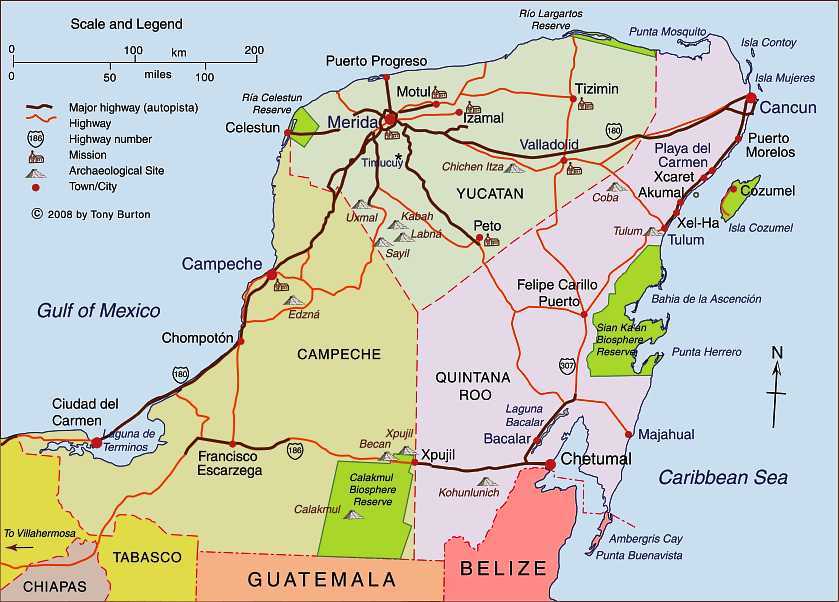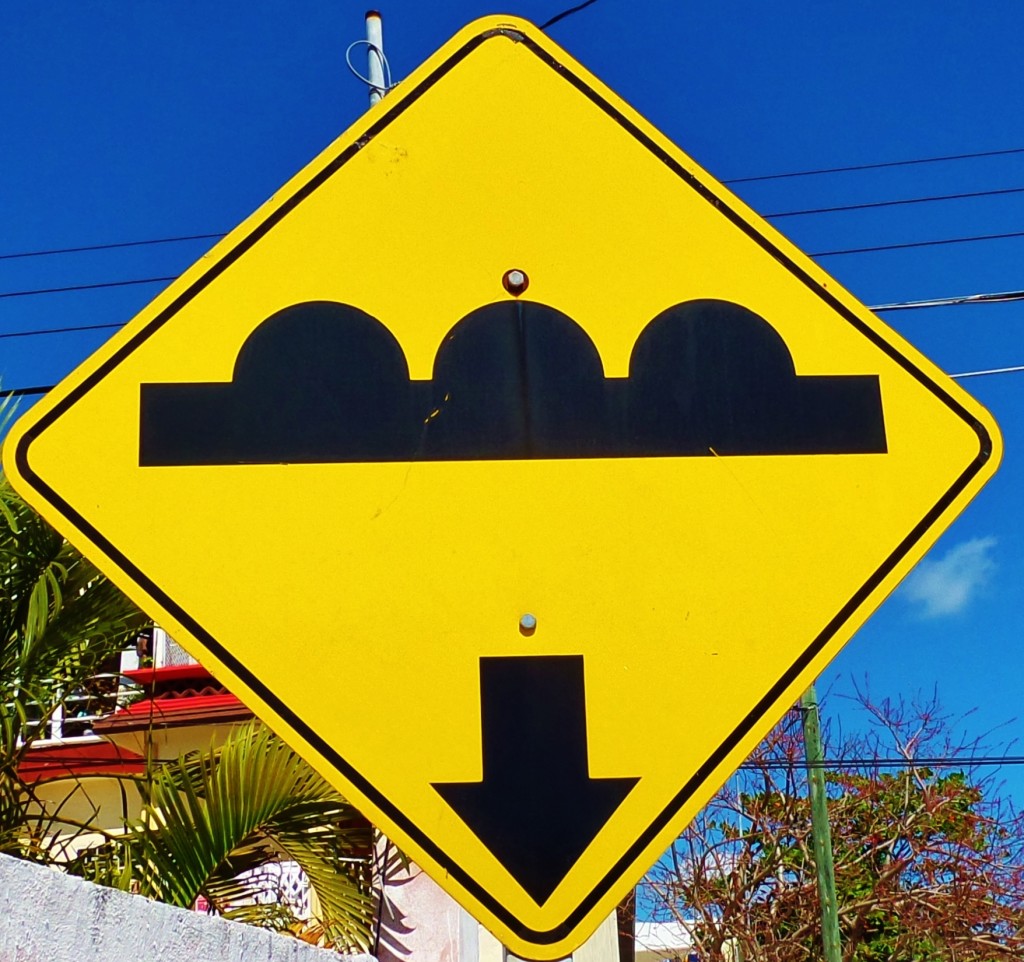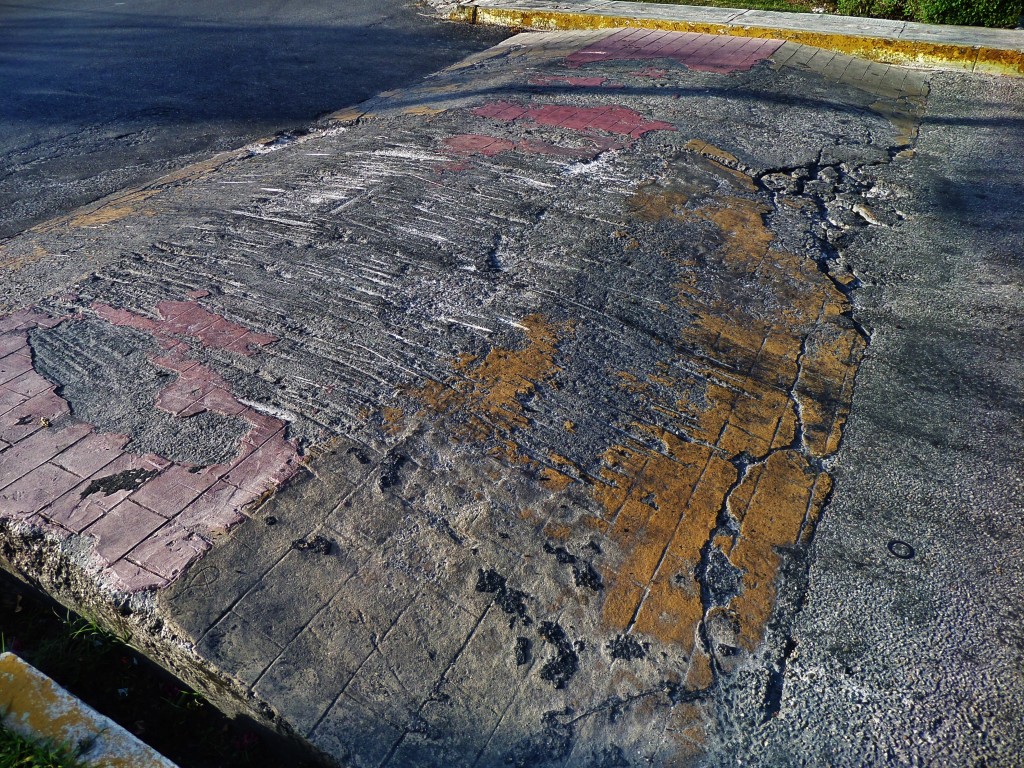
The Driving Guide to the Riviera Maya
Driving in a foreign country might be something you cannot imagine yourself doing or you might have some anxiety over doing it. We want to tell you some basic road rules for driving in Mexico that will help ease your fears and give you more confidence to go out on your own. There are some certain particularities about driving in the Riviera Maya and Playa Del Carmen that you should know about. Here is our guide for you.
Renting cars in Mexico
Renting a car and driving gives you freedom to go to places without relaying on a tour bus and their schedules. It also can be cost effective if there are several people. There are many rental agencies to choose from both at the airport and in Playa Del Carmen. Even if you get to Tulum and you decide to rent a car, you will find places to rent from. Smaller towns have limited or no rentals available.
Once you have your car you are off for adventure. There are actually very few roads in the Yucatan Peninsula so it is hard to get lost. Roads are well marked and in decent condition. Roads here take far less abuse then other places. We do not have severe winters that damage the pavement, many people use mopeds and motorcycles, people use busses instead of cars to get around, and people even bike. So in addition to roads in decent shape there is not a lot of traffic on the roads.
Tip: Sian Kaan trips require special vehicles and are extremely hard to drive on the dirt roads in the reserve. Normally this area is best only visited with a tour.
Car insurance for rental cars in Mexico
Most people just let their credit card companies cover their rental. However in Mexico you must have Mexican liability coverage by law. You still might technically be covered by your card company but you need to know for sure and have printed proof of it at the time of pickup. Even if you have some coverage, it is good to have good coverage. If you are involved in a serious accident the police have the right to hold you until your insurance gives enough proof it will cover it. This can mean waiting in jail until your insurance company does this.
Bottom line, it is best to at least factor in getting Mexican liability insurance on your car rental. One of the car rental companies we refer people to includes all insurance and is highly liked by our readers.
Toll Roads in Mexico
There are two tolls roads you will encounter between Quintana Roo State and Yucatan State. These are the 180 that runs from Cancun to Merida and the 305 which connects Playa Del Carmen to the 180.
Tolls must be paid in pesos. There is no ATM and they do not accept credit cards. So be prepared with cash. A round trip can involve a couple hundred pesos in tolls. Toll operators always have change.
There are alternatives to the two toll roads but these will take you much longer to get to where you want to. Only if you want the scenic route with lots of topes, take the local route.

What to do when you car breaks down while driving in Mexico
If you are driving in your own car here is information what to do if you have car trouble.
If you are on a main road and you have car problems you can call 911 for the emergency services (yes 911 is for most things in Mexico, not just super important emergencies). However there is an organization called the Green Angels that drives the roads and provides free services to stranded motorist. If you are stuck on a main road, put your hood up as a sign of trouble. If you wan to call them directly their number is 01-55-5250-8221. English is most likely spoken as well as Spanish.
In most small towns there usually is someone that is a mechanic but you most likely will need to speak Spanish and ask around.
If you have a rental car and you have problems….
Make sure you get the local number of the rental car company when you leave. There are usually two numbers available, the office and after hours support number. If you need help from the police or have an accident, 911 is the number to call.
Dealing with the police in Mexico
The number one thing people usually worry about is the police. Will I get stopped for something? Will I be asked for a bribe? What if I do not speak Spanish? For the most part the police are very helpful and are there to keep the roads safe.
The good news is that everyone knows that tourists bring in a lot of income for the country, the bad news is that police know tourists may not know the laws and are easy to ask for money. The other good news is that you will have far better chance of having an issue getting gas then with the police. (Make sure you read out article on avoiding scams at the gas station before going out for a drive!)
Police checkpoints
There are police checkpoints through the Yucatan Peninsula including the state of Quintana Roo where Cancun and Playa Del Carmen are. Sometimes there is a checkpoint near the Cancun Airport, there is a checkpoint entering and leaving Playa Del Carmen, there is a checkpoint usually entering and leaving Tulum, a check point at the state boarders as well as other places but these are the most often crossed by tourist. ( Big tip: there are cameras run by solar power high up on poles before you get to some checkpoints, so if you are speeding don’t think you are going to be ok if you slow down for the checkpoint.)
Why are there police checkpoints? They are mainly there to make sure no one is driving drunk or has obvious problems with their car. They do random inspections of vehicles at these points as well. Basically the police prefer you to come to them rather then chase you down. If they wave for you to stop they might ask for your license and registration for the car and ask you some questions. It is best to answer honestly and be courteous. The police are just doing their job to keep the roads safe. But what if you get stopped by the police? We will cove that next.
Speeding tickets and getting stopped by the police
The good news is that police rarely pull you over on the highway. Traffic usually moves along at it’s own pace and colectivos speed down the highway at a rate higher then the posted limit. This however does not mean you should feel free to do so.
If you are stopped at a checkpoint make sure to have all your papers ready, this includes your valid drivers license and rental contract for your car. You should check the paperwork before you leave the agency because the police can ask you a question if it is not in order (i.e. not having the matching license plate on the paperwork that your car has.) You should ask for a phone number of the agency you rented from which can come in handy of you need to call them or if you are having trouble understanding Spanish. This means having a cell phone and enough credit to call long distance.
Should you pay a bribe to the police in Mexico?
What if there appears to be a problem and it seems as if the police are asking for a bribe? First thing is try to understand the problem. Sometimes they are merely pointing something out or striking up a conversation on where you are going and they offer helpful directions. If they say that something is wrong, and your Spanish is good, try to see if this is indeed the issue or they are just saying something is wrong.
If you have been speeding or drove down a one way street the wrong way then it is up to the police what to do. It is best to wait for them to give you a ticket. Most of the time if it is not a major infraction or perhaps you are not sure it is even something real, they will just make you sit there a little while they “check something” in their car an then wave you on.
If they write a ticket it goes on record what they are alleging and often this only gets officers in trouble if it is fake. It may seem easy to hand over a 200 or 500 peso note to avoid the hassle of figuring out a ticket but like we said, most of the time you will not actually get a ticket and you will only feed the problem of corrupt police asking for money. An educated driver is the best defense against corruption.
Tip: All tickets have to be paid at the police station and are never paid on the street. So any refence to paying it there is asking for a bribe. Sometimes the police will say the station is far, or the ticket is expensive. These are often just excuses to see if you will give them money. Never do this! It only makes the problem worse.
Local road rules for driving in the Riviera Maya and Yucatan Peninsula
There are some things you will have to get used to when driving in Mexico. Some of these are actual laws and some are more driving customs in the area.
Passing cars
On rural roads like the one from Tulum to Coba, in order to pass a car, make sure you are in the section that allows it, then speed up, the car in front of you will drive on the right side of the road a little to make it easier for you to pass. You should do the same if someone is trying to pass you, pull slightly toward the right to allow more room to pass. This is very helpful on two lane roads. Sometimes two lane roads become three lanes when a car is passing.
Traffic circles
Traffic circles ( or “glorieta” in Spanish) can be found in some parts of the Yucatan. Sometimes you are supposed to stop before entering the circle and other times you enter without stopping but yield to your left for oncoming traffic. Traffic circles are most common in Cancun but can be found in almost all towns and highway intersections.
Watch your windshield
If you find yourself behind a construction truck, give them room because a lot of trucks have gravel that bounces off onto the road and can crack your windshield. (Something that is often not covered by basic insurance.) This is very important on the 307 Highway between Cancun and Tulum. There are often gravel trucks driving on the highway.
Gas for your car
Make sure you fill up before you go on long trips because if your tank is low you may not find a gas station before you need it. Gas stations in some parts of the peninsula are only in towns and there can be 100 KM stretches of road between fill ups. See our guide on how to avoid scams at the pump.
Caution: Speed bumps (everywhere!)
The most important sign to look our from while driving in Mexico is the “Topes” sign. This is a bit humorous because anyone that has ever driven in and around Playa Del Carmen will tell you that at one time or another they had been driving along and missed seeing the speed bumps and bottomed out their car or braked hard to avoid hitting them.
Topes are speed bumps that are places in cities to slow traffic or even on highways to alert drivers they are entering a town or police checkpoint. Topes vary from plastic half circle bumps to a mountain of concrete in the road. Usually there is a sign alerting you that there are topes several hundred meters ahead and then a sign with a down arrow indicating where it is exactly in the road. It seems no matter how vigilant you are, they sneak up on you. This is where your copilot can help you and spot these hazards before you speed into them.

Caution when it rains when driving in Mexico!
If you are driving on the 307 highway that runs from Cancun down to Chetumal, be careful when it rains. This applies especially for the section from Cancun to Tulum. The road can be slick with fresh rain hits it. Roads are not designed the best for run off and sometimes the deluge that happens here in the topics creates pools of water. All of this in conjunction with not the best skilled drivers and unfamiliar tourist drivers creates a spike in fender benders. Keep alert and slow down when it rains.
Some city streets are also made from smoother cement and with a slight build up of oil, the first rainfall can make them very slippery.
Driving in Playa Del Carmen
If you are going to be driving around Playa Del Carmen, here are some tips for driving within the city.
- Most streets are one way.
- It can be hard to decipher at each intersection if you have to stop or the other street has the stop sign. Many times you hear a screech and it is because one driver ran through an intersection without stopping, so even if you have no stop sign look out for other drivers.
- Watch out for bikes, tricycles, and mopeds that make their own lanes. Sometimes the streets can be a little less then organized and have their own flow.
- If you drive on 30th Avenue you will be driving with the busses since most use this Avenue for their routes. Frequent stops and maneuvering around other busses should be expected and since they are bigger then you, they just might feel they can pull in front of you even if there is not space.
- Taxi drivers are not know for driving the best in Playa Del Carmen and often accidents with them result in “your fault”. Take lots of photos if you have a run in with one especially if it was not your fault.
- Watch out for topes (speed bumps)
- For the love of god do not drive on 5th Avenue. Most of it is a pedestrian street. Every once in a while a lost tourist thinks they can drive down 5th Avenue with hundreds of tourist walking around.
- Don’t expect to drive to your hotel below 10th Avenue. Most of the streets are blocked off and they only allow taxis or delivery trucks. Check with your hotel if they have parking for guest.
- If you take the highway through Playa Del Carmen make sure you know where to get off, you can pass your street and have a time trying to figure out how to get back.
- Avoid Juarez Avenue because it is so busy with activity and busses.
- Watch for pedestrians. At raised sections of the street you have to yield to people crossing. At other places tourist sometimes think they have right-of-way but are really just crossing in the middle of traffic.
- Do not park at yellow lines or near intersections. If you park illegally the police will unscrew one of your license plates and hold it until you come and pay. This is not a fun process, so make sure when you park you are legal.
- If you rent or drive a scooter/ moped around be careful of smooth concrete streets like Constituyentes Avenue and 30th Avenue. If there is a little water the road becomes very slick. Read our article on scooters in Playa Del Carmen.
We hope this article helps you prepare for driving in Mexico. It is not as hard as it seems but being prepared and educated makes it much easier. If you have a tip for other readers, feel free to leave it below in the comments.



Thanks forall the details here. I have been debating weither I should drive around while there or take the busses. I hate to miss out on local things but the rumors you hear about Mexico and driving make me nervous. Thanks for putting some of those worries to rest.
We rent a car each time we come to Mexico and have never had any issues. We make sure when we get gas to watch them and not get short changed. The roads are in very good conditioned and signed very well. It is great to get off the beaten path and meet real Mexicans off the normal routes.
Besides asking for bribes the police will steal from your car if you aren’t observant. The police at the checkpoint on 307 near Playa del Carmen asked me to pull over. They didn’t say why. They asked us (me, my wife, my daughter and my son) to exit the car and began searching the trunk. This was a distraction because while one officer was searching the trunk another officer going through stuff in the car. I went to see what he was doing and started video recording on my cell phone. He was going through my wife’s purse which was on the front seat. It’s against the law in Mexico for the police to search purses or wallets. I presume he was looking to steal money because when he saw me he immediately stopped and pretended he was just moving the purse out of the way. But I have him on camera with his hands in the purse. I sent the video to the US Consulate in Cancun and filed a complaint with the Mexico Department of Tourism. This incident occurred in September 2021.
Hello
Thank you for your comments. There is a big checkpoint both entering Playa and exiting Playa on the 307 Highway. Currently there are more checks for immigration going on in addition to the other safety measures the police enforce. Police are not obliged to speak another language other than Spanish , but it would be good if they did because of the international destination. We always get out and watch the police if they want to look in the trunk. You did a very good thing and reported it to your Consulate because they will meet with the head of police and air problems with them. We are glad that nothing went missing in the process.